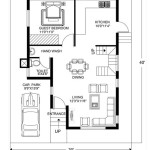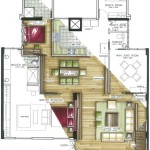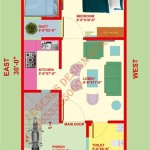Prefab House Floor Plans: A Comprehensive Guide
Prefabricated homes, often referred to as prefab homes, have evolved significantly in recent years. No longer limited to basic structures, prefab housing now encompasses a wide array of architectural styles and floor plan options, catering to diverse lifestyles and budgets. Understanding prefab floor plans is crucial for anyone considering this increasingly popular housing solution.
Key Considerations When Choosing a Prefab Floor Plan
Several factors influence the selection of a suitable prefab floor plan. Careful consideration of these points will ensure the chosen design aligns with individual needs and preferences.
- Lifestyle: Consider the occupants' lifestyle. A family with young children will have different needs than a retired couple.
- Budget: Establish a realistic budget early in the process. Prefab homes offer a range of price points, impacted by size, materials, and customization.
- Plot Size and Orientation: The available land will dictate the feasible dimensions and layout of the house.
- Local Regulations: Research building codes and zoning regulations in the intended location.
- Energy Efficiency: Explore energy-efficient design features and materials to minimize long-term running costs.
Popular Prefab House Floor Plan Styles
Prefab homes offer a variety of architectural styles, each with distinct characteristics and advantages.
- Ranch: Single-story homes offering convenient, accessible living.
- Cape Cod: Traditional designs featuring steep roofs and symmetrical facades.
- Two-Story: Maximize living space on a smaller footprint.
- Modern/Contemporary: Open floor plans, clean lines, and large windows characterize this style.
- A-Frame: Distinctive triangular shape, often used for vacation homes or cabins.
- Farmhouse: Rustic charm with wraparound porches and spacious kitchens.
Understanding Floor Plan Terminology
Familiarity with common floor plan terms is essential for effective communication with manufacturers and builders.
- Footprint: The outline of the house on the ground.
- Open Floor Plan: Minimizes walls between living spaces, creating a sense of spaciousness.
- Split-Level: Staggers floor levels to create distinct living zones.
- Modular: Sections of the house are built in a factory and transported to the site for assembly.
- Panelized: Wall panels are prefabricated and assembled on-site.
Customizing Prefab Floor Plans
While many manufacturers offer standard floor plans, customization options are often available to tailor the design to specific requirements.
- Room Sizes: Adjusting the dimensions of bedrooms, bathrooms, or living areas.
- Window and Door Placement: Optimizing natural light and ventilation.
- Exterior Finishes: Selecting siding, roofing materials, and exterior colors.
- Interior Finishes: Choosing flooring, countertops, and cabinetry.
- Smart Home Features: Integrating technology for enhanced comfort and convenience.
Working with a Prefab Home Builder
Collaborating with a reputable prefab home builder is crucial for a successful project. Careful selection ensures a smooth process and a high-quality final product.
- Research and Compare Builders: Evaluate experience, reputation, and customer reviews.
- Review Sample Floor Plans and Projects: Examine past work to assess quality and design capabilities.
- Obtain Detailed Quotes: Compare pricing and inclusions from multiple builders.
- Verify Licensing and Insurance: Ensure the builder is properly licensed and insured.
- Clearly Define Expectations: Establish clear communication channels and timelines.
Benefits of Choosing a Prefab Home
Prefab homes offer several advantages compared to traditional site-built construction.
- Faster Construction Time: Factory production reduces on-site construction time.
- Cost Savings: Efficient manufacturing processes can lead to lower overall costs.
- Sustainable Building Practices: Prefab construction often incorporates eco-friendly materials and minimizes waste.
- Quality Control: Factory-controlled environments enhance quality and precision.
Exploring Prefab Floor Plan Resources
Numerous online and offline resources can assist in researching and selecting prefab floor plans.
- Manufacturer Websites: Many prefab companies showcase their floor plans and customization options online.
- Online Home Design Platforms: Several websites offer tools to design and visualize floor plans.
- Architectural Magazines and Books: Browse publications for inspiration and design ideas.
- Prefab Home Shows and Exhibitions: Attend events to explore different manufacturers and models.
By carefully considering the factors outlined above and utilizing available resources, individuals can confidently choose a prefab house floor plan that meets their specific needs and aspirations. Thorough planning and collaboration with a reputable builder will ensure a successful and rewarding homebuilding experience.

Modular Home Floorplans Layouts Next

Modular Home Plan Three Bedroom House Floor Prefab Plans Craftsman

Minihomes Hybrid Trio Prefab Home Plans House Floor Container

Modular House Plans Modularhomeowners Com

Modular Design May 2024 L Shaped House Plans

Modular Home Floor Plans Gordon S Homes

Floor Plans Finish Werks

Custom Modular Homes Home Builder Renovations

Container Prefab House Plans

Gallery A Small Prefab House In Spain Homes Plans Floor








